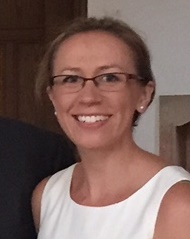 Each year, students tell me, “I don’t read” or “I haven’t read a whole book since the fourth grade.” I take those comments as a challenge. It’s part of who I am. If someone tells me that something can’t be done, I double down and whisper to myself, “Wanna bet?”
Each year, students tell me, “I don’t read” or “I haven’t read a whole book since the fourth grade.” I take those comments as a challenge. It’s part of who I am. If someone tells me that something can’t be done, I double down and whisper to myself, “Wanna bet?”
This attitude faltered this fall, though, when I moved to teach at a new school. My new building was recently designated by the state as a Shared Educational Entities school, which means that it draws nontraditional students from the other main high schools in our district. Students come here to recover credits, or if they have not otherwise found success in a traditional high school structure.
As I unloaded my boxes of books, people were quick to warn me that I wouldn’t be able to use those here. “You don’t have enough time,” they warned me. “These kids won’t read.”
Of course I’d had plenty of those kids in the past. But they were always among students who already identified as readers, so I relied somewhat on the readers to help establish a culture of reading. Even when I taught AARI (reading intervention) classes at the traditional high school, I built a reading culture with independent, choice reading.
But for some reason, facing what seemed like an entire building of “non-readers” in an alternative environment, I wondered if I could still do so.
The possibility scared me, but I dug in my heels. Could I establish enough of a reading culture that I could “trick” students into reading outside school, without thinking of it as homework or a requirement?
So far, I’m a month in, and this is what I’ve tried.
Book Talks
A few times a week, I take a minute or two to highlight a couple of books from my collection. I show students the cover, tell them a bit about the book, and sometimes read a page or two as a teaser.
I have the students collect these titles on a handout called “My Bookshelf,” on which they collect the books based on how interested they might be in reading them. They rank each on a scale of 0 to 10. When they are stuck, and unsure what to do next, I ask them if there are any books on their “bookshelf” that they might be interested in reading.
Classroom Library Scavenger Hunt
In the first week, as we’re establishing our norms and getting to know each other, the students complete a very quick survey that asks them to explore the library. They have to check out how the bins are organized, look for titles that they recognize, and decide which areas of the library they might gravitate toward.
This gives them lightly structured and non-threatening time to get the books in their hands. It also allows them to get comfortable looking through the space.
Read-Alouds
Sometimes I build a few pages of read-aloud into a book talk. Lately, though, I’ve been trying to include some read-alouds from choice books in my mini-lessons.
For example, when we did a lesson on making inferences about characters’ thoughts, I read from the first chapter of Gary D. Schmidt’s Orbiting Jupiter, which is one of the 2016 titles for the Global Read Aloud project.
Choice in Independent Practice
After our mini-lessons, I try to build in as many choices as possible. As we were establishing the norms for our classroom learning community, my students told me loud and clear that they hate when teachers tell them what they have to read. At the same time, they’ll do it if they can choose the readings. Sometimes they have a choice between a few different short stories, and sometimes I’m able to include independent-reading books as well.
I’m only a month in, so I don’t yet know how successful I’ll be, but I am hopeful. My students are talking about the books and asking questions about the read-alouds. One student asked, “Did this guy write anything else?” His eyes got wide as I showed him the section of my library that houses Walter Dean Myers’ books.
A little over 25 percent of my students have actually checked books out of my library, and one boy even took two. And every student (EVERY! STUDENT!) has been able to identify at least one book that they want to read.
To say that this hasn’t been easy is an understatement. On days when the kids act like all they want is a worksheet and to check out of thinking, I worry that I can’t keep it up. But I’d say that with a start like this, it’s well worth trying.
 Megan Kortlandt (@megankortlandt) is a secondary ELA consultant and reading specialist for the Waterford School District. In the mornings, she teaches Language Arts at Durant High School, and in the afternoons, she works with all of Waterford’s middle and high school teachers and students in the Curriculum, Instruction, and Assessment department. Additionally, Megan works with Oakland Schools as an instructional coach for AARI. She has presented at various conferences including the Michigan Council for Teachers of English and Michigan Reading Association annual conferences.
Megan Kortlandt (@megankortlandt) is a secondary ELA consultant and reading specialist for the Waterford School District. In the mornings, she teaches Language Arts at Durant High School, and in the afternoons, she works with all of Waterford’s middle and high school teachers and students in the Curriculum, Instruction, and Assessment department. Additionally, Megan works with Oakland Schools as an instructional coach for AARI. She has presented at various conferences including the Michigan Council for Teachers of English and Michigan Reading Association annual conferences.
